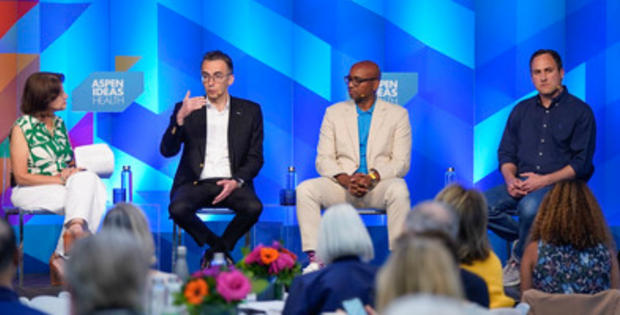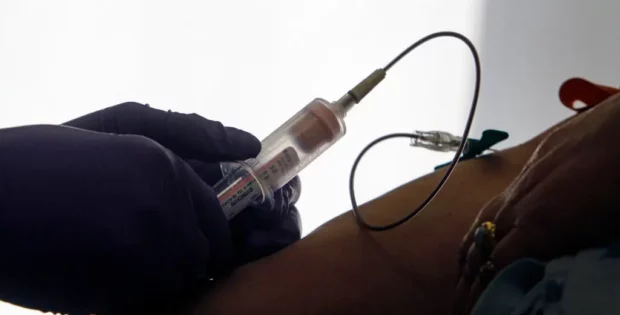Can Social Media Find Cancer? One Click – One Life Saved

The average person will spend 5.7 years on social media during their lifespan. That means 2 hours and 25 minutes every single day is dedicated to scrolling. The world is rapidly evolving, from how we consume information to what we know. With the advancements in social media platforms and the ability to reach the masses, we must consider this shift in outreach strategies and how we engage with our patients. With medical knowledge doubling every 73 days- optimizing the use of social media to inform (Corish, 2018), involve and implement care has never been timelier.
Cancer mortality rates for some cancers have decreased over the last decade, such as colorectal and breast cancer. This decline is most directly related to the increase of cancer screening programs to identify cancer earlier when it has the best chance for treatments with curative intent. While these cancer types have broadly decreased, racial and ethnic disparities persist in cancer screening rates, especially among African American and Latinx populations (Brandzel et al., 2016). With a reported aggregate improvement in screening rates across the population, the cancer mortality rates in racial and ethnic groups have not changed compared to the white population.
While there are many explanations for this statistical difference, including socioeconomic, health system, and cultural factors- knowledge of the risk factors for developing cancer is vital. Bridging the knowledge gap, increasing trust, facilitating access, and reducing barriers are integral to mitigating disparities in cancer detection (Stellefson et al., 2020). Therefore, I propose we invest more in social media campaigns to reach, engage, and educate our communities.
TikTok to Cancer Detection?
The intersection of social media and health promotion hosts substantial opportunities for successful social media health awareness to engage with the intended audience. In addition, the influx of social media as a health promotion technique has provided a resource to engage with the community while removing the physical barriers that have historically prevented successful engagement opportunities.
Critical to this success is the interaction within an outreach platform. Interaction is at the foundation of human nature. Simply put- our brains are wired to connect. Connections have driven human interaction for millions of years. Why is this relevant? Human connection is a chemical addiction. Our brains release dopamine with human connection, leading us to do it again. Dopamine is released further when our brain interacts with search-and-explore functions, alerting our brain to pay attention to the next thing coming. Why is this important? If we know where people consume information- let’s meet them where they are.
Clicking through Cancer Screening
While most of the population is aware of cancer screening and recommended screening, there is no direct causation between screening awareness and adherence. Unfortunately, this lack of correlation is increasingly prevalent within the systematically minoritized/marginalized. Therefore, the strategy of engaging the population through social media is not just to provide the community with an awareness campaign that everyone who is screen-eligible should be screened- instead, arm the population with the knowledge regarding why they should be screened and make the process interactive and trackable.
The introduction of social media and mobile health platforms has become widespread in healthcare. Despite this increase in adoption, there has been a minimal connection to increased social media marketing influencing screening rates. Cancer screening has been proven to reduce disease-specific mortality for many cancers, so an effective population-based screening program is necessary (Nakajima et al., 2022). I set out to understand the effectiveness of this strategy. By researching pre-and post-intervention studies, randomized clinical trials, and searching databases including A.T. Still, MEDLINE, Clinicaltrials.gov, PubMed, and Embase, literature recommends intervention effectiveness with those who undergo screening within a specific timeframe (i.e., 3-6 months) (Plackett et al., 2020).
Additionally, research shows that outreach to underrepresented populations should be customized to resonate with the ethnicity and age group (Ruco et al., 2021). We do not live in a one size fits all society. Therefore, we must acknowledge and appreciate all our differences to address the systemic barriers that have persisted through time.
Let’s focus on solving the problem instead of pointing at it.
This social media approach is focused on developing a culturally adapted program to address populations that report chronically low screening adherence rates. Common barriers to cancer screening include a lack of knowledge, cultural factors, distrust in the system, and a fatalistic view of a cancer diagnosis. Therefore, a successful campaign should be accessible, engaging, resonant, and delivered through community mobilization. What does this mean? Representation is important!
Customizing a social media campaign means collaborating with trusted community leaders, religious groups, and representatives of diverse groups working to communicate planned and accurate messages for maximum reception. Social media messages, including trusted members of society, well-known community advocates, and culturally conscious messaging, drives interaction and engagement (Nakajima et al., 2022).
How do we stop cancer? We prevent it. Screening early and finding pre-clinical or early cancer reduces the mortality of cancer. The age of screening eligibility aligns with a highly active demographic on social media platforms such as Facebook, Instagram, Twitter, YouTube, and TikTok. Therefore, outreach on these platforms can be customized for a specific audience by leveraging the A.I. algorithms to identify the exact audience by age and geography. This customization helps further funnel this strategy toward the intended use population.
Leverage Analytical Metrics to Drive Change
Developing interactive “click-worthy” initiatives that fuel social media user engagement to increase outreach and drive positive health outcomes is a click-a-way. Dichotomous variables can be obtained by comparing the user analytics gathered by the social media platforms (e.g., Facebook) with who clicks on the online initiative and correlate this to an increase, decrease, or no change in the cancer screening rate within the specified geographical region. Partnering with the community health system within the social media target geography can amplify outcomes by monitoring baseline screening rates compared to the potential change over 6 and 12 months post-social media interaction. User metrics available through social media platforms like Facebook can further identify populations and user characteristics that engage with the social media campaign and get screened, those who engage and do not get screened, and those who do not engage at all.
Optimizing methods to enhance the understanding and implementation of social media in the cancer screening space is critical to expanding the potential to increase adherence. Merging social media interventions as an adjacent and multicomponent strategy to increase cancer screening is a valuable initiative to research further. Embracing the “meet the people where they are” mentality is unequivocally applicable to leveraging social media engagement to improve health outcomes. I challenge us all to leverage these social media platforms- by reaching the population to get screened; we can save lives. We might be only one click away from saving a life.


